Abstract
Large-scale composting facilities are known to cause environmental problems, mainly through pungent air emitted by composting material. In air samples taken above stacks set up to prepare compost used as a substrate in mushroom cultivation, several volatile compounds were identified by means of the coupled techniques of gas chromatography and mass spectrography. Among the compounds identified, sulfur-containing compounds [H2S, COS, CH3SH, CS2, (CH3)2S, (CH3)2S2, and (CH3)2S3] are the most conspicuous in causing a nuisance. Quantification of these compounds was performed by concentrating a relatively small air sample on Tenax GC. The sampling method appeared to be very useful under field conditions. During the composting process, the concentration of the volatile sulfur compounds in emitted air ranged from 1 to 35 μmol/m3. The highest concentrations were obtained at the end of the outdoor process. Total sulfur emission amounted to 8.3 mg of sulfur per kg (fresh weight) of compost. The end product still contained 2.58 g of sulfur per kg (fresh weight) of compost. Suggestions about the origin of the volatile sulfur compounds are made.
Full text
PDF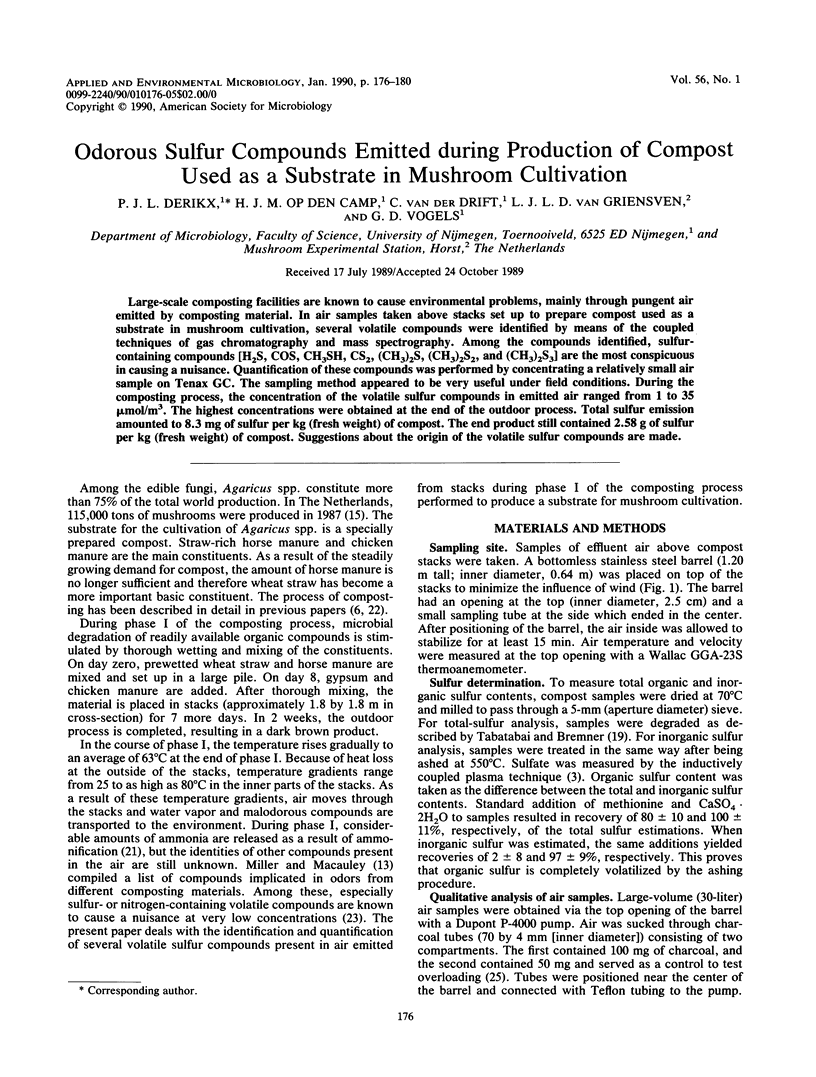
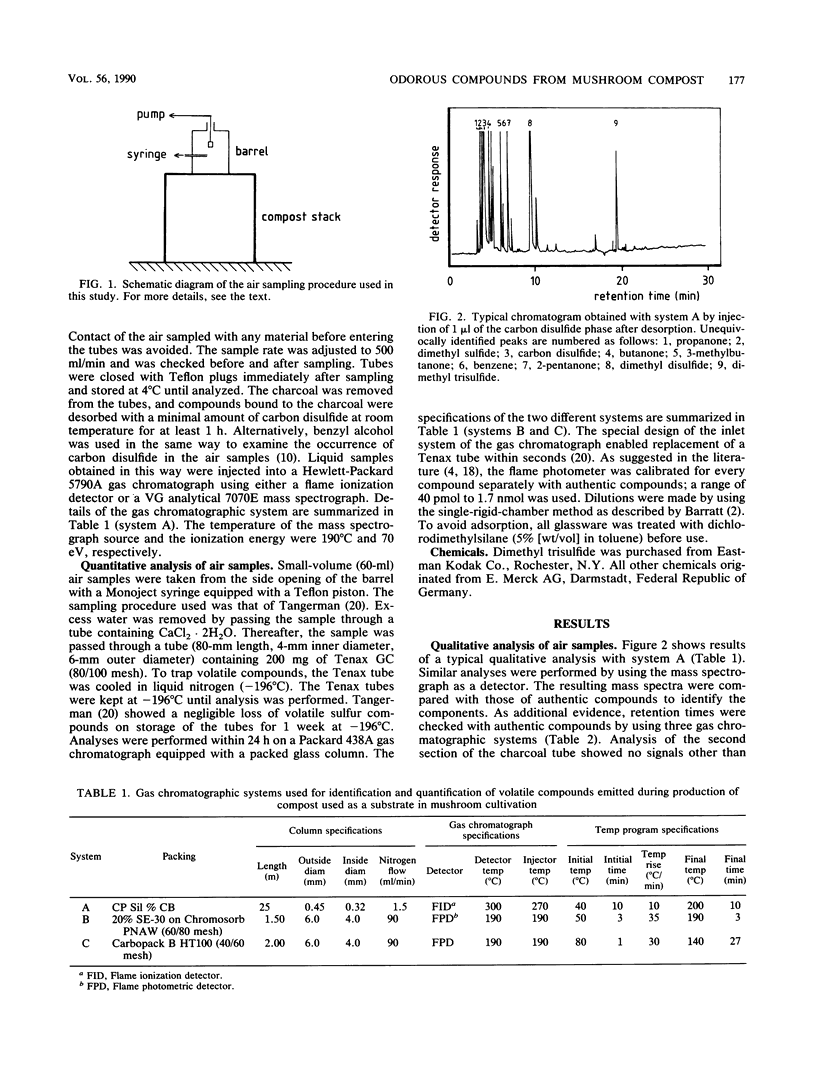
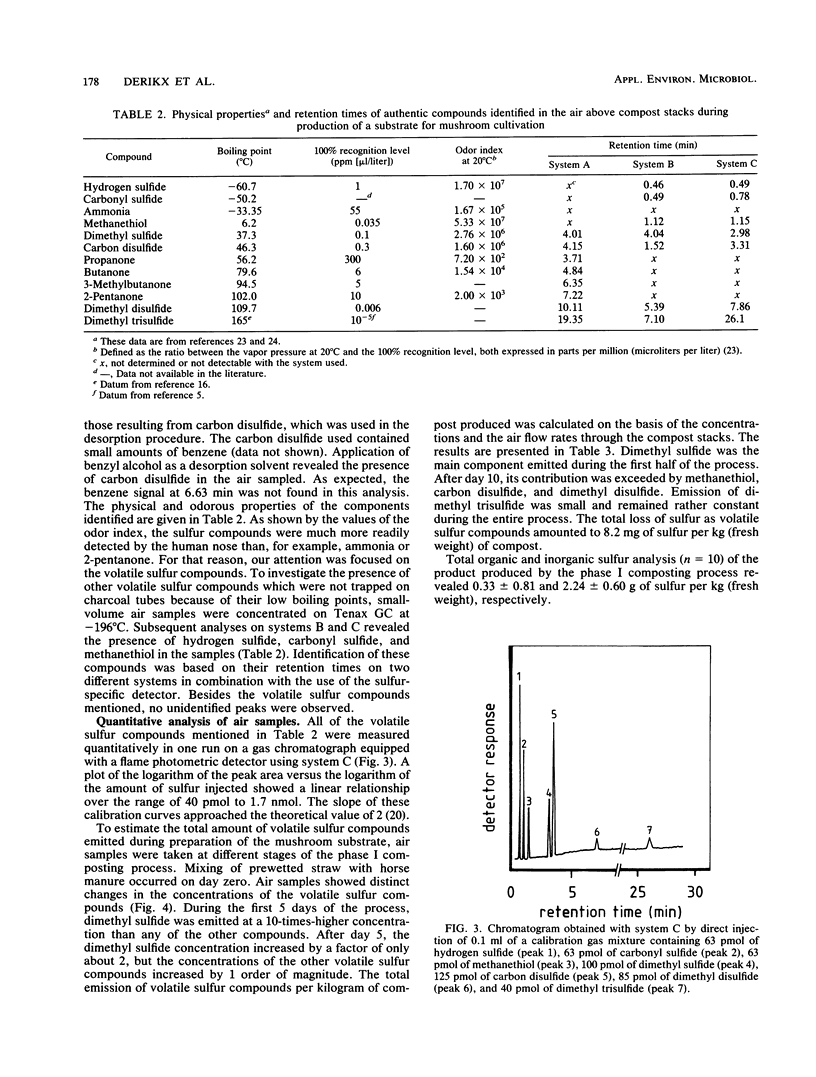
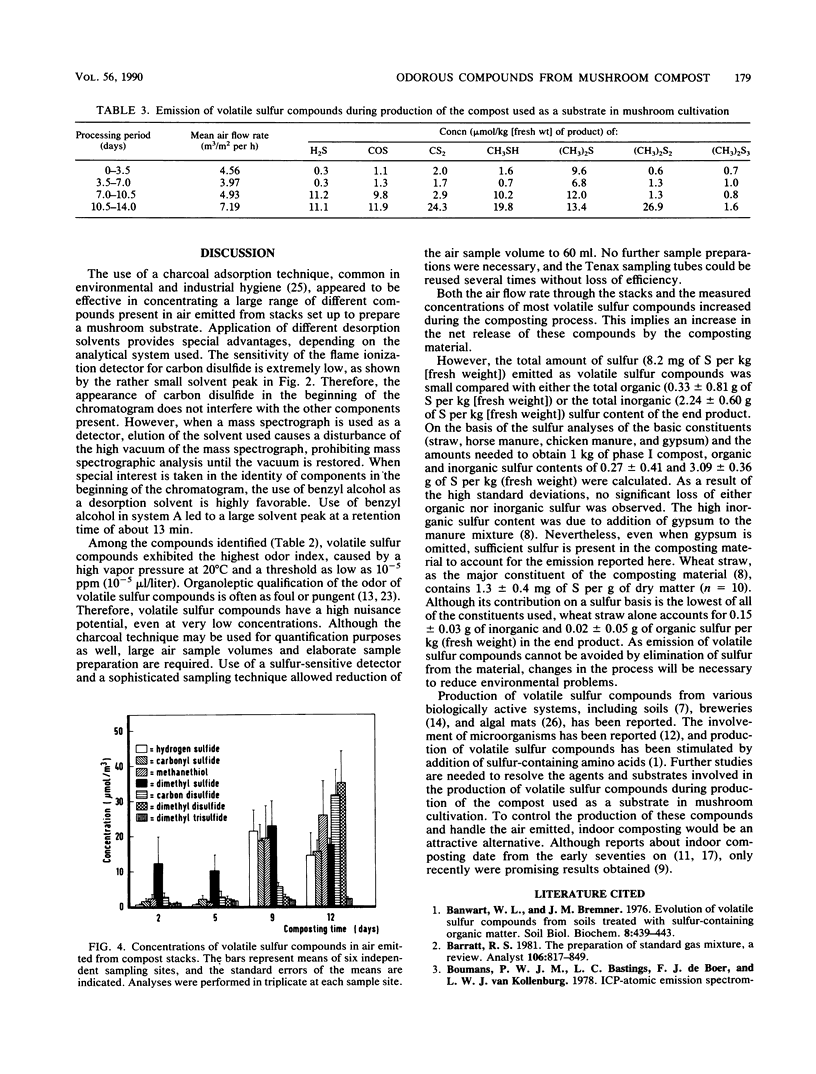
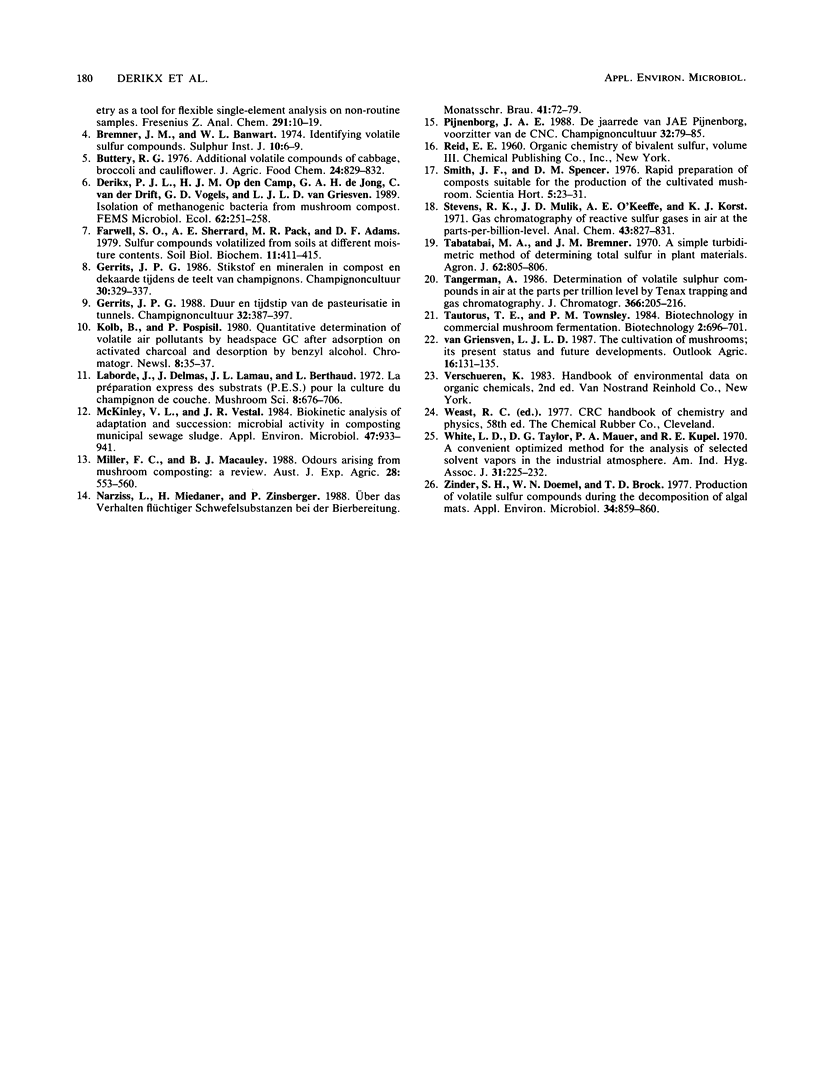
Selected References
These references are in PubMed. This may not be the complete list of references from this article.
- McKinley V. L., Vestal J. R. Biokinetic analyses of adaptation and succession: microbial activity in composting municipal sewage sludge. Appl Environ Microbiol. 1984 May;47(5):933–941. doi: 10.1128/aem.47.5.933-941.1984. [DOI] [PMC free article] [PubMed] [Google Scholar]
- Stevens R. K., Mulik J. D., O'Keeffe A. E., Krost K. J. Gas chromatography of reactive sulfur gases in air at the parts-per-billion level. Anal Chem. 1971 Jun;43(7):827–831. doi: 10.1021/ac60302a008. [DOI] [PubMed] [Google Scholar]
- Tangerman A. Determination of volatile sulphur compounds in air at the parts per trillion level by Tenax trapping and gas chromatography. J Chromatogr. 1986 Sep 24;366:205–216. doi: 10.1016/s0021-9673(01)93468-5. [DOI] [PubMed] [Google Scholar]
- White L. D., Taylor D. G., Mauer P. A., Kupel R. E. A convenient optimized method for the analysis of selected solvent vapors in the industrial atmosphere. Am Ind Hyg Assoc J. 1970 Mar-Apr;31(2):225–232. doi: 10.1080/0002889708506234. [DOI] [PubMed] [Google Scholar]
- Zinder S. H., Doemel W. N., Brock T. D. Production of volatile sulfur compounds during the decomposition of algal mats. Appl Environ Microbiol. 1977 Dec;34(6):859–860. doi: 10.1128/aem.34.6.859-860.1977. [DOI] [PMC free article] [PubMed] [Google Scholar]


